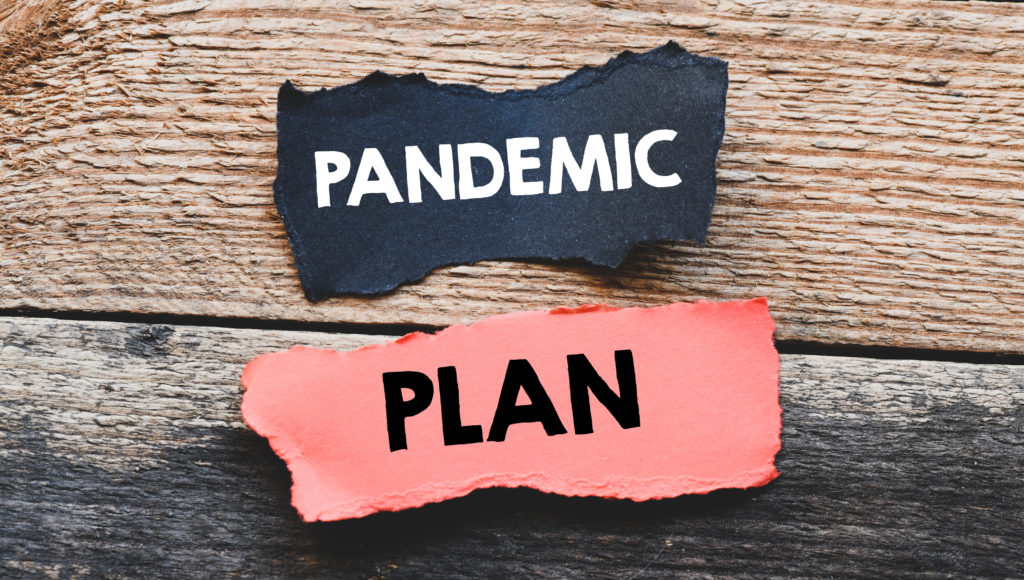By LaTia Few, MBA, PMI-ACP
Principal Project Manager and Founder
LaFew & Associates, LLC
Nearly six months into the largest global pandemic in modern history, many organizations are still reeling from the sudden rapid adoption of remote work models. For those who primarily worked virtually prior to the COVID-19 pandemic, transitioning into the “new normal” was easier than others, for whom remote work is still relatively unchartered territory. As we head into the last few months of 2020, the reality is that the future impacts of COVID-19 on the business world remain uncertain.
What we do know is that remote work—whether part-time, full-time, or a hybrid between virtual and on-site—is now more widespread and likely here to stay. As such, for organizations to successfully weather the future storm that a second or continued wave of COVID-19 may bring, they must continue to maintain business continuity regardless of physical locations. This means that all staff, particularly project and delivery teams who are often on the front lines of revenue-generating business operations, must have the right structure, people, processes, and technology to seamlessly adjust to changing workplace dynamics at a moment’s notice. If not, productivity and revenue are at stake.
Having worked for over 10 years as a virtual project manager, I’ve identified three recommendations that will help your organization to effectively manage projects during these uncertain times:
- Keep a Big Picture Perspective
Over the past few months, many projects have been delayed, downgraded, or even canceled. Given the unprecedented challenges facing today’s organizations, many of these changes have been unavoidable. However, it is still critical to anticipate, manage, and mitigate the impacts on your projects before they happen, to the greatest extent possible. One framework I use to proactively assess, plan, manage, and deliver a project throughout its life cycle is Agile, an iterative project management approach that allows teams to break large projects into smaller tasks. Teams complete the tasks in short iterations and within two-to four-week sprints. Some of the benefits Agile offers are increased productivity, greater flexibility, and more engagement from stakeholders. Providing value becomes the goal, not just meeting deadlines and coming in under budget. Successfully running a project, particularly during the pandemic, requires an integrated approach that helps organizations to maintain balance.
Before your project begins, make sure to meet with project stakeholders to verify alignment across all areas and set clear expectations and agree on the scope of work. Next, build a project plan and backlog that ensure your organization has the resources necessary to complete all tasks within the designated time frame and meet the objectives and goals of the project. Make sure to factor in extra time to compensate for possible slips in delay. Once the project is underway, it is critical to regularly monitor the progress of your team’s work, budget, and processes. Tools like Wrike or Monday can help you visualize status and communicate with stakeholders and the project team on all aspects of your progress. Finally, be prepared for changes such as scope creep or shifts in priorities by developing and maintaining a formal change management process that outlines the steps for reviewing and gaining approval on changes to your project.
- Modernize and Maintain Regular Communication
For remote teams, incorporating communication protocols into the project plan is arguably the most essential method to ensure project success. It is most effective when developed after observing the daily flow of team communications during previous projects. But remember, what works in a face-to-face office environment may not always translate to a virtual environment and vice versa. Project managers must stay attuned to and ahead of changing work dynamics to define the best methods, tools, and frequency that teams must communicate to maintain optimal engagement, connectivity, and access to the information they need to complete their tasks.
For all project teams, especially virtual ones, I find that it is beneficial to hold regular status meetings or “daily stand-ups” to ensure that all meetings are run efficiently and that participants are actively listening and participating. It is also critical to have open “two-way” communication with teams using multiple mechanisms such as meeting minutes, project logs, and written status updates. I also highly recommend leveraging video conference tools like Zoom or Google Meet, along with enterprise-grade productivity tools such as Microsoft Teams. Adopting the right technology to fit your environment can help your project team stay in sync, streamline communications, and centralize access to important documentation.
- Adopt a “People First” Mentality
People are the heart of every project. In times like this, it can be tough to keep your team motivated. That’s why demonstrating empathy is more important now than ever to build and sustain resilient project teams. Always keep in mind what everyone on your team may be going through during these difficult times. Some of your team members may be feeling isolated from working remotely, while others are caring for sick family members, worried about job security, or juggling work responsibilities with homeschooling. Whatever the situation may be, it’s essential to be patient, remain flexible, and work with team members on the best solution. Whether you need to accommodate new work schedules or shuffle assignments around, with proper planning and adequate communication, it is possible to effectively balance your project’s requirements with your team’s needs.
Finally, never underestimate the power of encouragement right now in helping to lift everyone’s spirits. Even in “normal” times, managing or participating in a project can be a stressful experience. For this reason, I try to be mindful that I am projecting a sense of calm and composure, as well as promoting an encouraging, positive, and fun team atmosphere. Celebrating wins, publicly thanking others, scheduling informal discussions, and team building are small but effective ways to lift your team’s spirits and help everyone to maintain focus.
Final Thoughts
As Franklin Roosevelt once said, “People don’t care how much you know until they know how much you care.” While none of us knows for sure what the next few months have in store, as leaders we do have the power to create the best possible environment for our teams. By leveraging proven systems, state-of-the-art tools, best practices, and cultivating a positive mindset and attitude, your organization will be able to help its project teams to not only successfully navigate through the uncertainty ahead, but also emerge from the pandemic stronger than before.
Are you looking to learn more ways your organization can build a resilient project team during and after the pandemic? Contact LaFew & Associates today for a free consultation.

